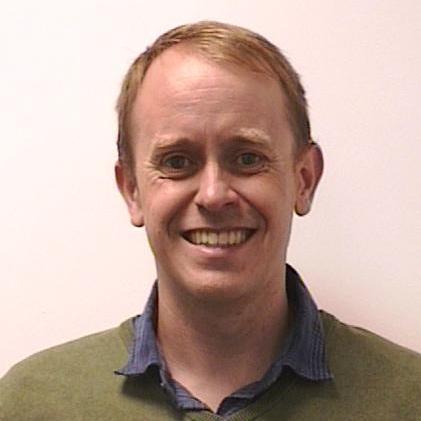Staff profile

| Affiliation | Telephone |
|---|---|
| Assistant Professor in the Department of Physics |
Biography
As an assistant professor in advanced instrumentation at the Centre for Advanced Instrumentation, my research focuses on development of photonics, both for astronomy and more down-to-earth research, along with developing two-photon polymerised structures for use in optics and large-scale astronomical instrumentation.
My journey in instrumentation started during my PhD at Durham University, where I developed photonic components using ultrafast laser inscription. The results from my work led to a 6-month STFC STEP award and 3-month postdoc in Durham, where I took a fibre refomatter I’d developed to the William Herschel telescope. I then moved to the Landessternwarte at Heidelberg University (Germany) to take up a 2-year Zeiss postdoctoral fellowship. Here I developed new devices and branched out into two-photon polymerisation (additive manufacturing). For this I received a Gliese fellowship from the ZAH and a Deutsche Forschungs Gemeinschaft grant working on photonics for astronomy and grew a small astrophotonics group in Heidelberg. I then moved to the Max Planck Institute for Astronomy to work on the MICADO instrument for the Extremely Large Telescope. In my latest step, I have returned to Durham as an assistant professor, to combine the smallest scales of instrumentation with some of the largest.
Research Interests
Astrophotonics:
Astrophotonics uses photonics to enhance the capabilities of the latest generation of telescopes. This takes many forms, from using optical fibres to transport light over large distances, to integrating optical components on a chip. My research focusses on developing ways to get light optimally into astrophotonics instruments and manipulating it to optimise its use in astronomy. Examples of my latest projects are a Two-Photon Polymerised microlens ring to increase coupling into a fibre and the MCIFU, an integral field unit designed to look for exoplanets.
Astronomical instrumentation:
With each new generation of telescopes the instrumentation behind them increases in size and complexity. Today’s state of the art astronomical instrumentation requires teams of tens or hundreds of people and many years to develop, but the results can change our view of the universe. I began my journey developing large instrumentation as part of the team developing the MICADO instrument for the Extremely Large Telescope and will continue to this journey as part of the team developing BlueMUSE for the Very Large Telescope.
Photonic instrumentation:
Photonics is the generation, detection and manipulation of light and underpins modern day society. Many of the technologies use in astrophotonics were developed for the photonics industry (arrayed waveguide lanterns, fibre Bragg gratings) and some of the technologies developed for astrophotonics are making their way back to photonics (photonic lantern). Part of my research is looking into how the devices I have developed for astronomy can be applied to other fields, such as biology and movement science.
Applications of Two Photon Polymerisation:
Two-Photon Polymerisation is a method of additive manufacture (3D printing) that enables high precision fabrication of nano to centimetre scale structures. My research uses the method to produce structures that are not creatable by existing methods to produce novel optics. I am particularly interested in how Two-Photon Polmerisation can be used to cross the huge size scales between photonics and astronomical instrumentation.
Publications
Journal Article
- Hidden in Plain Sight: Searching for Dark Companions to Bright Stars with the Large Binocular Telescope and SHARK-VISRowan, D. M., Thompson, T. A., Kochanek, C. S., Li Causi, G., Roth, J., Vaccari, P., Pedichini, F., Piazzesi, R., Antoniucci, S., Testa, V., Johnson, M. C., Crass, J., Crepp, J. R., Bechter, A., Bechter, E. B., Sands, B. L., Harris, R. J., & Fulton, B. J. (2025). Hidden in Plain Sight: Searching for Dark Companions to Bright Stars with the Large Binocular Telescope and SHARK-VIS. Astrophysical Journal, 981(1), Article 94. https://doi.org/10.3847/1538-4357/adad6e
- Little iLocater: paving the way for iLocaterHarris, R. J., Crass, J., Johnson, M. C., Bechter, A. J., Power, J., Calcines Rosario, A., Crepp, J. R., Bechter, E. B., Sands, B. L., Kopon, D., Ertel, S., Barboza, S., & Bianco, A. (2025). Little iLocater: paving the way for iLocater. Monthly Notices of the Royal Astronomical Society, 536(3), 2421-2432. https://doi.org/10.1093/mnras/stae2720
- Resolving the Young 2 Cygni Runaway Star into a Binary Using iLocaterCrepp, J. R., Crass, J., Bechter, A. J., Sands, B. L., Ketterer, R., King, D., Kopon, D., Hamper, R., Engstrom, M., Smous, J. E., Bechter, E. B., Harris, R., Johnson, M. C., Baggett, N., Dulz, S., Vansickle, M., Conrad, A., Ertel, S., Gaudi, B. S., … Woodward, C. E. (2024). Resolving the Young 2 Cygni Runaway Star into a Binary Using iLocater. Astronomical Journal, 169(1), Article 48. https://doi.org/10.3847/1538-3881/ad9b1d
- Efficient photonic reformatting of celestial light for diffraction-limited spectroscopyMacLachlan, D., Harris, R., Gris-Sánchez, I., Morris, T., Choudhury, D., Gendron, E., Basden, A., Spaleniak, I., Arriola, A., Birks, T., Allington-Smith, J., & Thomson, R. (2017). Efficient photonic reformatting of celestial light for diffraction-limited spectroscopy. Monthly Notices of the Royal Astronomical Society, 464(4), 4950-4957. https://doi.org/10.1093/mnras/stw2558
- Development of integrated mode reformatting components for diffraction-limited spectroscopyMacLachlan, D. G., Harris, R. J., Choudhury, D., Simmonds, R. D., Salter, P. S., Booth, M. J., Allington-Smith, J. R., & Thomson, R. R. (2016). Development of integrated mode reformatting components for diffraction-limited spectroscopy. Optics Letters, 41(1), 76-79. https://doi.org/10.1364/ol.41.000076
- Applications of Integrated Photonic Spectrographs in astronomyHarris, R., & Allington-Smith, J. (2013). Applications of Integrated Photonic Spectrographs in astronomy. Monthly Notices of the Royal Astronomical Society, 428(4), 3139-3150. https://doi.org/10.1093/mnras/sts265

